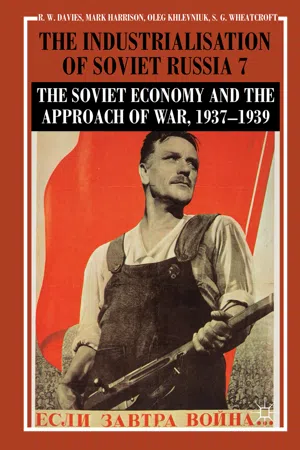The opening of the Soviet archives has enabled us to obtain a much more accurate understanding of the character and scope of the terror, its various phases and their interconnection. From the beginning of 1936, on Stalin’s initiative, the treatment of the former members of the party oppositions changed for the worse (Vol. 6: 281–283). In previous years many of them were expelled from the party, and some were confined to prison or exiled. But many others were given posts in the party or in government departments. In 1936, however, measures were prepared and enforced which indicated that the whole group was to be eliminated. The visible manifestations of these repressions were the public trials of August 1936 and January 1937. Early in 1937 a general purge of senior economic officials was launched, extending well beyond the former oppositionists, and this was accompanied by an attack on the middle ranks of the official strata more generally, including leading personnel in the regions. This continued during 1937 and 1938 and, on a reduced scale, in the last two and a half years before the war.
These developments may be categorised as the nomenklatura purge. The nomenklatura was a list (or rather a set of lists) of posts, appointments to which were approved by the party. Such lists existed at many levels of the hierarchy and in every region. By extension, Soviet officialdom has often been called ‘the nomenklatura.’ We had a general understanding of the nomenklatura purge of the late 1930s before the opening of the archives, because many of its actions were reported in the press at the time or were publicised after Stalin’s death.1 But almost nothing was known about the mass purges of the same period which, including the ‘mass operations’ against ‘anti-Soviet elements’ and ‘counter-revolutionary nationalist groups’ undertaken between August 1937 and November 1938, involved the execution, imprisonment, or deportation to remote areas of over a million Soviet citizens.
The nomenklatura purge and the mass purges were linked. These were not chaotic events. Initiated and planned by the top leadership, they were carried out on the basis of decrees issued in Moscow. These circumstances are crucial to an attempt to ascertain the causes and impact of the terror. Purges and terror were utilised to a greater or lesser extent throughout the Stalin era. Within the interwar period, markedly different phases of repressions can be distinguished. Intensive repression took place during the Civil War, in the years of ‘the great breakthrough’ from 1928 to 1933, and during the terror of 1936–1938. In 1928–1933 and 1936–1938 political repression involved the concoction on a large scale of plots and conspiracies against the regime attributed to those arrested. On the other hand, during 1922–1927 and 1933–1935 a much more calculated and moderate policy was pursued. In these periods the political leadership placed less emphasis on the use of extra-judicial violence to solve problems, and switched to a relatively more sophisticated policy.2 But the terror of 1936–1938 was far more intensive and violent than previous repressive measures, and requires a special explanation.
1 The Nomenklatura Purge
There are little or no grounds for the view that economic difficulties impelled the leadership to launch the nomenklatura purge in 1936.3 This was a year of unparalleled industrial development, and grain stocks were sufficient to enable the state to overcome the consequences of the bad harvest of 1936 without large-scale famine. However, Stalin and the other leaders had unrealistic hopes that the economy might expand even more rapidly, and Stalin was evidently convinced that young, more vigorous and Soviet-educated staff could give the economy a new impulse. The older generation of economic managers and politicians had been through the extreme tensions of rapid industrialisation and agricultural disaster; the belief among this élite that Stalin had a large share of the responsibility for the economic crisis and famine of 1932–33 may have been widespread. Stalin himself certainly believed that hostility from the established economic and political leaders was threatening his dictatorship in conditions where the danger of aggression by Germany and Japan was growing rapidly more acute. He warned early in 1937 that the capitalist countries ‘are encircling the Soviet Union and awaiting the opportunity to attack it, to destroy it, or at the very least to disrupt its strength and weaken it.’4
While the nomenklatura purge had its own grim logic, it was by no means an inexorab...
